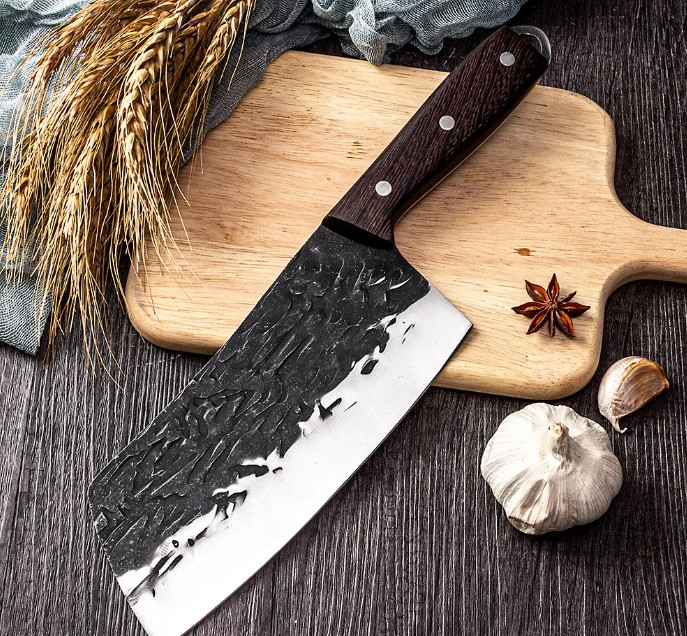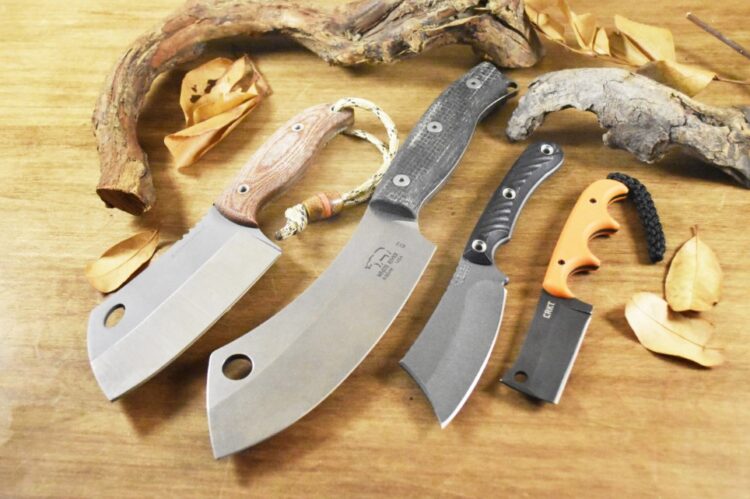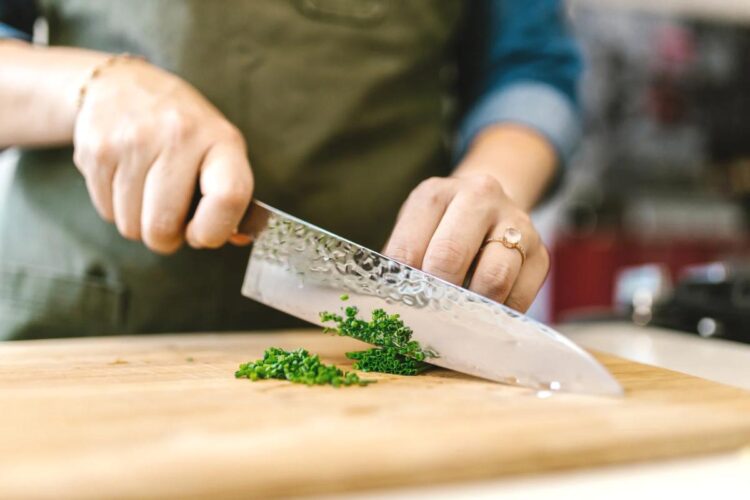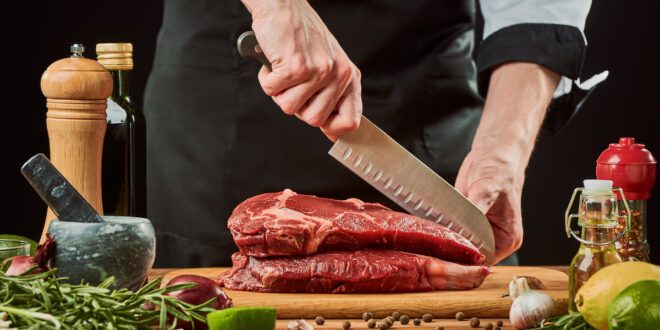Choosing the right kitchen knife is a decision that resonates deeply with both amateur home cooks and professional chefs alike. The quality and type of knife one opts for can significantly influence cooking efficiency.
A well-crafted knife ensures precision in every cut, slice, and chop, reducing preparation time and enhancing the chef’s control over the ingredients. Moreover, the choice of knife directly impacts the quality of the prepared food.
A suitable knife ensures ingredients retain their texture, flavor, and nutritional value, guaranteeing that every dish is not only delightful to the palate but also visually appealing.
This article serves as a comparative analysis between two revered giants in the world of culinary tools – the cleaver and the chef’s knife. We will explore their distinct characteristics and evaluate their performance in various culinary scenarios.
Our purpose is to provide readers with comprehensive insights to make an informed choice based on their cooking needs, preferences, and the type of cuisines they most often prepare.
Through this exploration, we aim to elucidate that the secret to a delightful cooking experience lies not just in the ingredients, but also in selecting the appropriate tools, specifically, choosing between the robust, heavy-duty cleaver and the versatile, nimble chef’s knife.
Cleaver vs. Chef’s Knife
The cleaver and chef’s knife, while both integral in the culinary world, have distinctly different impacts on the quality of prepared food. The cleaver, characterized by its heavy build, is often associated with butchering tasks – chopping through bone and slicing through thick cuts of meat.
Its design, though efficient for these tasks, is not tailored for precision cuts, which can impact the presentation and texture of certain dishes. On the contrary, the chef’s knife is renowned for its versatility and precision.
Its design caters to a variety of tasks including slicing, dicing, and mincing, offering chefs the ability to make delicate and precise cuts that enhance the visual and sensory appeal of dishes. The choice between these two iconic knives can thus profoundly influence the aesthetics, texture, and overall quality of the culinary creations they are used to prepare.
The Cleaver

Design and Build
The cleaver is distinctively recognized by its broad, heavy, rectangular blade, designed to endure substantial use. It’s crafted to handle more arduous tasks, making it a staple in various kitchens. The handle is engineered for a comfortable, yet firm grip, ensuring safety and control during use.
Blade Characteristics
Cleavers possess a thick, rigid blade with an edge designed primarily for chopping. The blade’s substantial weight aids in cutting through bone and thick cuts of meat with ease. Its blunt top edge is sometimes used for pounding and tenderizing meat.
Best Uses for Cleavers in the Kitchen
Cutting Meats
The cleaver excels in processing meat, especially when it involves cutting through bones and cartilage. Its powerful build allows chefs to chop through animal joints and bones effortlessly, making it a favorite for meat preparation.
Chopping Vegetables
Despite its reputation as a meat processor, the cleaver is also effective for chopping vegetables. The broad blade makes it easy to scoop and transfer ingredients, while the weight aids in swift, clean cuts.
The Chef’s Knife

Design and Build
The chef’s knife is characterized by its balanced and ergonomic design. The handle is crafted for comfort and control, promoting precision and reducing hand fatigue. The blade’s curve allows for a rocking motion, perfect for various cutting tasks.
Blade Characteristics
The blade of a chef’s knife is typically thin and sharp, designed for precision cutting. It’s versatile and capable of making clean slices, dice, and chops. The blade’s material, often high-carbon stainless steel, ensures it’s both durable and capable of maintaining a sharp edge.
Lighter and More Maneuverable
Compared to the cleaver, the chef’s knife is lighter and offers enhanced maneuverability. Its design allows chefs to make quick and precise cuts, essential for tasks that require a delicate touch and accuracy.
Best Uses for Chef’s Knives in the Kitchen
Slicing and Dicing Vegetables
The chef’s knife shines when it comes to preparing vegetables. Its precision and ease of handling make it perfect for creating uniform slices, dice, and juliennes, contributing to both the taste and presentation of dishes.
Cutting Meats
While not built for bones, the chef’s knife is excellent for cutting meats. Its sharp edge and balanced design make it perfect for creating clean, precise cuts, ensuring that meats are prepared with both efficiency and quality in mind.
Recommendations for Different Types of Cooks

Home Cooks
For home cooks, a chef’s knife is often recommended due to its versatility and ease of use. It’s adaptable and well-suited for a variety of common kitchen tasks, making it a staple in the domestic setting.
Professional Chefs
Professional chefs may find value in both knives. A chef’s knife for its precision and versatility in various cutting tasks and a cleaver for processing meat and heavy-duty chopping, ensuring all bases are covered in a professional kitchen.
BBQ Enthusiasts
BBQ enthusiasts, often dealing with larger cuts of meat and bones, might lean towards a cleaver. Its sturdy build and ability to cut through bones make it a staple tool for preparing meats for the grill.
The choice between a cleaver and a chef’s knife boils down to individual cooking needs, preferences, and the specific tasks at hand. The cleaver’s robust nature makes it a powerhouse for heavy-duty tasks, while the chef’s knife stands out for its versatility and precision in a variety of cutting tasks.
By understanding the unique attributes and applications of each, cooks can equip their kitchens with tools that elevate their culinary skills, ensuring every meal prepared is a masterpiece of both art and taste.
 Hi Boox Popular Magazine 2024
Hi Boox Popular Magazine 2024



